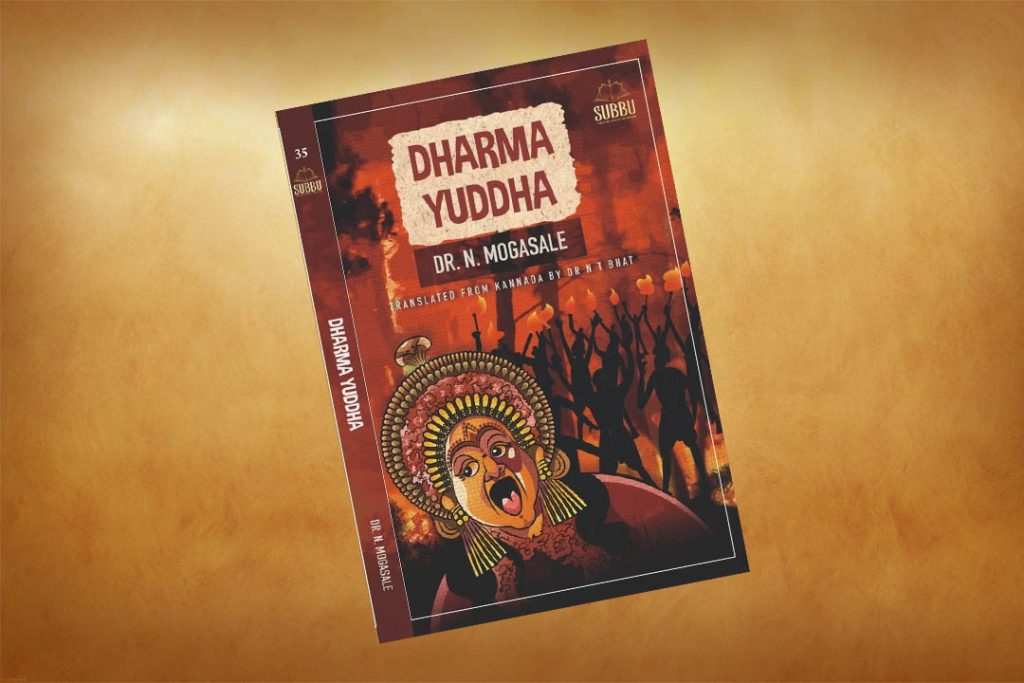The eminent Kannada writer N. Mogasale’s much acclaimed novel ‘Dharma Yuddha’ has been translated into English by the well-known translator Dr. N.T. Bhat, and it has been published by Subbu Prakashana of Hubli with the very same original title. The title reminds us of the Dharma Yuddha of the Mahabharata. There, though it was decided that the battle will be taught abiding by righteousness, all kinds of tricks were played by both the parties. In Mogasale’s novel also righteousness seems to have gone to the dogs. Hence the title carries irony.
The novel records the societal transformation in a coastal village and shows how it gives rise to religious and political conflicts. As in all his novels and short stories, Mogasale focuses on the happenings in a typical village called Seethapura just like R.K. Narayan does with his Malgudi. The novel ‘Dharmayuddha’ depicts the social, cultural, religious and political atmosphere of Seethapura ultimately talking about the downfall of values in human society at large.
The discourse starts with a minor clash between two groups in Seethapura, divided over the question of ‘reconstruction’ of Punjurli deity’s shrine. Carcasses of Black cats were repeatedly found floating in the well of Surappa. His wife attributes it to some bade omen. So, they approach the astrologer, who, after all the ritualistic procedures, finally proclaims that it is due to the ire of Panjurli, whose shrine on the hilltop has been neglected for a long time. Therefore, some people come to a consensus that the shrine should be reconstructed. Though the elderly people say that a shrine was not there earlier, they were given a deaf ear. A committee was formed to plan how the shrine should be built which incorporated all kinds of religious and political leaders in it. Quite ironically, when the work started, the hill was annihilated and all the trees around were felled destroying the whole environment. The people in the committee made their profit. However, eventually, the truth is out of the bag that dropping the carcasses of cats into the well is the mischief of one of the neighbours. Since such incidents might take place anywhere around the globe and such people are found everywhere all over the world, we need not say that it is a regional novel. It is universal in its true sense.
The English translation by N.T. Bhat has a uniqueness of its own. The translator’s view is that any translation should freely reveal the culture inherent in the original language. He is well aware that some words in Indian regional languages are utterly untranslatable into foreign language like English. Even if you manage to find an appropriate equivalent, it will not convey the same meaning and tone with the same vigour. Therefore, he retains certain words like ‘Mastru’ and ‘Maraya’, Kamatru, Panditru, Svamiyavaru, Ashtamangala, Brahmakalasha and so on, as they are in the original. For a non-Kannadiga it is possible to grasp the meaning as the given context is self-explanatory. Besides, he has given an elaborate glossary too, at the end of translation. Being an experienced translator, Dr. N.T. Bhat has successfully penned the entire narrative in a beautiful manner.
Dr. Parvathi G. Aithal
Suraganga, Basrur Cross Road, Kundapur -576201
Mob.9242253642

